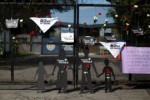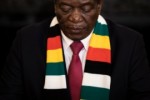Birth of Bangladesh~II
The ‘Mukti Bahini’ (Liberation Army) of the exiled Government of Bangladesh, trained and aided by the Indian Army, entered Bangladesh from all sides and its ranks and strength swelled with the support and help of the local populace who got ready to fight the Pakistani Army. At the same time, the refugee inflow into India became acute.
Concerned with West Pakistan’s policy of unmasked suppression and military crackdown, refugees started overflowing to India’s border states of West Bengal, Assam, Meghalaya and Tripura. The number of displaced persons exceeded 10 million and had to be given shelter and food by the Indian Government with hardly any help from international agencies. There was acute political tension precipitating ruptures in the already strained mutual relations between India and Pakistan and any spark was adequate to lead to an armed conflict.
Advertisement
The spark was provided by the Pakistan Air Force which, confident of the covert support of President Nixon who had ordered the US Seventh Fleet to move to the region, carried out a pre-emptive strike on Indian airports in Eastern India, code named Operation Chengiz Khan at a time when Prime Minister Indira Gandhi was on a visit to Calcutta (Kolkata) and nearby refugee centres on a fact-finding visit. Mrs. Gandhi reacted promptly by granting permission to the Indian Armed Forces to enter Bangladesh by land, air and sea in conjunction with Mukti Bahini. The war was short and precise.
Advertisement
The Indian Forces surrounded Dacca under the overall leadership of General (later Field Marshal) Manekshaw, and the Pakistani Commanders were forced to surrender instead of facing certain defeat and death in case of continued resistance. The Pakistani Army commanded by Lt. Gen. Niazi surrendered to the Indian Army unconditionally. It was a moment of eternal glory for the Indian Armed Forces and the worst ever defeat for........






















 Toi Staff
Toi Staff Belen Fernandez
Belen Fernandez Gideon Levy
Gideon Levy Tafi Mhaka
Tafi Mhaka Tarik Cyril Amar
Tarik Cyril Amar Somdeep Sen
Somdeep Sen Moncef Khane
Moncef Khane Samer Jaber
Samer Jaber Ghada Ageel
Ghada Ageel Sabine Sterk
Sabine Sterk John Nosta
John Nosta Andrew Silow-Carroll
Andrew Silow-Carroll
